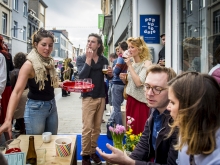Romania
Since 1989, Romanian cities have experienced a very dynamic evolution in their urban structure. Much faster than other cities, Bucharest adapted to the transition economic and social changes and attracted most direct foreign investments. Nowadays, Bucharest is concentrating up to 50% of Romania’s business revenues and generating approximately 25% of the national GDP. This makes the capital the dominant pole in the national urban system but, at the same time, creates an imbalance in the network of cities.
Therefore, a key priority for Romania is to foster a polycentric development of the urban network and a stronger cooperation between cities, as well as between cities and their surrounding areas, through measures aimed at increasing accessibility and attracting businesses and investments. Although Bucharest has a high accessibility, being the most important national transport hub, the extension and completion of the three existing highways connecting the capital to the West/TEN-T corridors and to the East/Black Sea Region are high on the national territorial agenda.
National strategies and government programmes are currently addressing urban challenges such as population ageing and demographic decline, social segregation, urban sprawl, traffic congestion. An integrated approach is promoted, including public investments in the road infrastructure, urban regeneration, and a more functional and efficient urban planning system in order to achieve a sustainable urban development.
SOME RELATED NETWORKS
EVUE II
ACCESS
NEXT AGRI
National URBACT Points
Useful links
Article
Making integrated urban development more manageable
Article
REFILL@LILLE: Policy Design Labs and URBACT exchange networks
Article
What now for the EU’s urban policy agenda?
Article
What happens when a city gets its citizens involved?
Article







